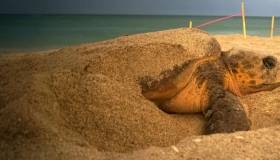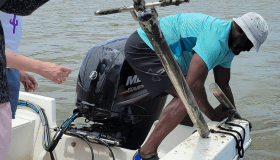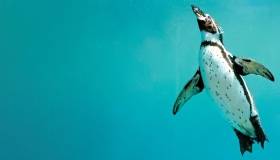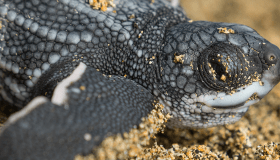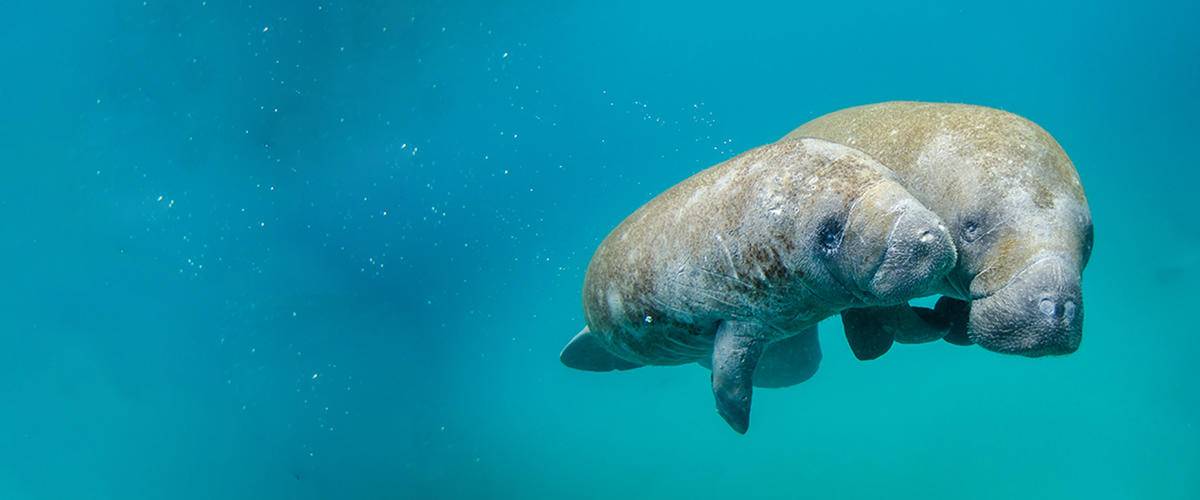
February 1, 2022 — Morris Animal Foundation’s 2022 wildlife grants focus on improving the health and well-being of animals living in and around coastal wetlands, including fresh and saltwater wetlands within coastal watersheds. Other government and nonprofit organizations are making investments in restoring and preserving at-risk wetland habitats, but far less is being invested in research to understand health risks facing the animals that live in these areas.
Why This Ecosystem Is Important
Coastal wetlands are some of the most at-risk habitats on the planet and are disappearing at an alarming rate. One U.S. Fish and Wildlife Service report estimates more than 80,000 acres of coastal wetlands in the United States, not including Hawaii or Alaska, are lost each year, due in part to development and the effects of climate change. That translates to about seven football fields every hour!
This loss of habitat spells trouble for many species, including fish and shellfish, birds, amphibians, reptiles, and many large and small mammals. According to the Environmental Protection Agency, more than one-third of all threatened and endangered species in the United States live only in wetlands. Nearly half of all threated and endangered species depend on wetlands for food, breeding and/or day-to-day survival.
Morris Animal Foundation recently awarded funding for 12 new wildlife studies focusing on coastal wetlands, including those below, supporting researchers who are trying to improve health outcomes and save species that depend on wetland ecosystems for their survival.
Disease Top of the List
Studies predict New Zealand’s hoiho or yellow-eyed penguin may become extinct in its mainland coastal habitat in the next few decades. One major factor contributing to species’ decline is disease. Researchers are diligently working to identify causative pathogens responsible for two diseases causing high mortality in hoiho chicks.
Other projects are focused on disease outbreaks in bottlenose dolphins, avian cholera in coastal wetland birds and risk factors for deadly parasitic infections in sea otters.
Rising Salinity
As sea levels rise and storm surges increase, aquatic salt concentrations are rapidly rising in many coastal wetlands. High aquatic salinity can cause kidney damage, developmental defects, and even death to coastal wetland species. Rising salinity also is an environmental stressor that can impact a species’ immune function and its ability to fight off infections. One critically endangered species at serious conservation risk from this issue is the Puerto Rican crested toad. Researchers are looking at how stress from disease – including a deadly fungal disease recently detected in the species – and rising wetland salinity impacts the toad’s reproductive health and tadpole development. Findings may help inform coastal wetland species conservation efforts worldwide.
Urbanization
The white ibis is one of the most abundant birds in south Florida, primarily found in the Everglades and along the coast. Historic wetland and coastal habitat deterioration has prompted the white ibis to increasingly adapt to urban environments. Researchers want to know how these new urban breeding grounds might affect white ibises’ long-term health and well-being. Findings will help inform conservation and management of white ibises and potentially other coastal wetland bird species expanding into urban areas.
Another funded study is looking at urbanization in different light. Researchers are investigating how the growth of cities along the shore of the Chesapeake Bay has changed the health and behavior of the North American river otter. As a keystone species consuming a wide variety of prey, the river otter is a key indicator of wetland health.
Toxins
Coal ash is a major waste product produced in the United States and contains several water-soluble toxins. Contaminant-laced waters can enter the environment via runoff, permitted discharge, or accidental spills from storage ponds or landfills. Researchers want to know how these contaminants affect aquatic invertebrates that live in wetlands near coal ash facilities. Findings will help inform conservation and management of wetland-adjacent coal ash repositories across the United States and potentially in other coal-producing countries.
Another funded study is looking at toxins in wildlife by studying a top-of-the-food-chain predator, the white-tailed eagle. This Eurasian sea eagle spends much of its time near large open water, including both coastal saltwater and inland freshwater wetlands. White-tailed eagles tend to accumulate toxic chemicals that are difficult to excrete. These chemicals get stuck in the eagles’ bodies and can affect their immediate and long-term health. The team hopes findings from this study will provide scientists with a new tool to assess the health effects of bioaccumulated chemical pollutants in wild animals living in or near coastal wetlands.
Traps
The diamondback terrapin is a turtle that lives exclusively in tidal wetlands and estuaries along the Atlantic and Gulf coasts of North America. Throughout the species’ range, the primary source of adult mortality is drowning in traps set out to catch blue crabs. Researchers are working on a new trap design – similar to excluder devices used for sea turtles in offshore shrimp fisheries – that will let the large crabs and terrapins into the traps, but will only let terrapins exit the traps. If successful, this new trap design may save thousands of terrapins from needless drowning each year and promote turtle conservation in estuaries that overlap with blue crab habitats.
Understudied Species
West Indian manatees have an important role in regulating vegetation levels in coastal rivers, inlets, bays, marshes and estuaries. Once widespread throughout the Caribbean, the endangered Antillean subspecies is locally extinct in many previously inhabited areas. Causes of manatee deaths in the region are not well documented, making it difficult to develop strategies to protect these endangered marine mammals. Researchers are retrospectively reviewing more than two decades of health data to provide a comprehensive view of factors that continue to threaten manatees in the region. Researchers hope to establish how background health problems are impacting Antillean manatees that will in turn guide management and conservation actions for this understudied subspecies.
Keep Wildlife Thriving
Morris Animal Foundation supports animal health researchers from around the world. Learn more about Morris Animal Foundation’s funded wildlife studies and how we are helping animals thrive and survive today and tomorrow’s health challenges.

